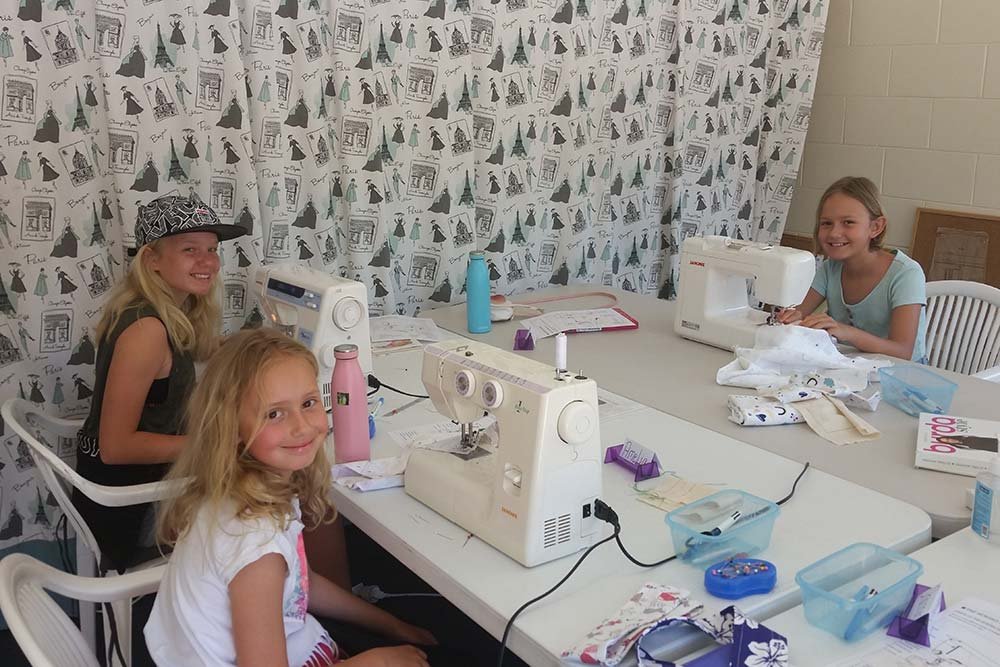Sewing classes for kids are more than just a fun activity—they offer a host of developmental benefits that contribute to a child’s growth. Engaging in hands-on activities like sewing helps children build fine motor skills, encourages creativity, and fosters a sense of accomplishment. Learning to sew introduces kids to basic concepts of design and construction, which can boost their confidence and problem-solving abilities. Beyond the immediate enjoyment of creating their own projects, children also gain patience and perseverance through the iterative process of sewing. These classes are designed to be both educational and enjoyable, making them an excellent choice for parents looking to enrich their child’s learning experience.
Why Sewing is Great for Kids
Development of Fine Motor Skills
Sewing involves precise hand movements, which can significantly enhance a child’s fine motor skills. From threading a needle to maneuvering fabric through a sewing machine, each task helps to improve hand-eye coordination and dexterity. These skills are crucial for other activities such as writing and drawing. As children practice sewing techniques, they develop better control over their hand movements, which translates to improved performance in various everyday tasks.
Encouragement of Creativity and Self-Expression
Sewing allows kids to express their creativity through design and customization. They can choose their fabrics, patterns, and colors, making each project unique to their personal taste. This creative freedom encourages them to think outside the box and develop their own style. By designing and creating their own clothing or accessories, children gain a sense of pride and accomplishment in their work, boosting their self-esteem and encouraging further exploration of their artistic interests.
Improvement of Focus and Patience
Sewing requires attention to detail and patience, as even small mistakes can affect the final outcome. Kids learn to focus on their tasks and persist through challenges, which enhances their problem-solving skills and resilience. The step-by-step process of sewing teaches them to follow instructions carefully and work methodically. This improved focus and patience can benefit children in other areas of their lives, from academics to social interactions.
What to Expect in a Sewing Class
Typical Class Structure and Activities
Sewing classes for kids are structured to be engaging and educational. They typically start with a brief introduction to sewing tools and techniques. Instructors demonstrate basic stitches and sewing methods before guiding the kids through their first projects. Classes often include a mix of instruction, hands-on practice, and time for individual creativity. Activities might range from making simple fabric animals to designing personalized tote bags. The goal is to provide a balanced mix of learning and fun, keeping children motivated and excited about their progress.
Tools and Materials Used
In a sewing class, kids use a variety of tools and materials tailored to their age and skill level. Basic tools include safety scissors, fabric markers, and sewing needles. For younger children, instructors might use child-friendly sewing machines with safety features. Fabrics come in different textures and colors, allowing children to experiment and choose what they like. These materials are selected to be both practical and safe, ensuring that kids can enjoy the sewing process without unnecessary difficulty or risk.
Types of Projects Kids Might Work On
Children in sewing classes work on a variety of projects that match their skill levels and interests. Younger kids might start with simple projects like pillowcases or small stuffed animals, while older children can tackle more complex items such as skirts, bags, or even quilts. Projects are chosen to help kids practice specific techniques and build their confidence. Each project is designed to be achievable yet challenging enough to keep students engaged, ensuring that they have a sense of accomplishment upon completion.
Choosing the Right Sewing Class
Factors to Consider: Age, Skill Level, and Class Size
When selecting a sewing class for your child, it’s important to consider their age, skill level, and the class size. Classes are often tailored to specific age groups to ensure that the instruction and projects are appropriate for the children’s developmental stage. Skill levels also vary, so finding a class that matches your child’s abilities—whether they are beginners or have some sewing experience—is crucial. Smaller class sizes often allow for more personalized attention and a better learning experience, so look for classes that offer a low student-to-instructor ratio.
Finding a Class with Experienced and Supportive Instructors
The quality of instruction can greatly impact a child’s experience in a sewing class. Look for classes led by experienced instructors who have a background in teaching children and a passion for sewing. Supportive instructors create a positive and encouraging environment, helping kids overcome challenges and celebrate their successes. Reading reviews or seeking recommendations from other parents can help you find a class with a reputation for providing high-quality instruction and a nurturing atmosphere.
Online vs. In-Person Classes
Both online and in-person sewing classes offer unique advantages. Online classes provide flexibility, allowing kids to learn at their own pace and from the comfort of home. However, in-person classes offer hands-on guidance and immediate feedback, which can be particularly beneficial for younger children or beginners. Consider your child’s learning style and needs when choosing between online and in-person options. Some programs even offer a hybrid approach, combining the convenience of online learning with occasional in-person workshops.
Benefits of Sewing Classes for Different Age Groups
Preschoolers: Basic Skills and Simple Projects
For preschoolers, sewing classes focus on developing basic motor skills and introducing simple concepts. Activities might include using pre-cut fabric pieces and basic hand-sewing techniques to create small, easy projects like simple stuffed animals or decorated bookmarks. These classes emphasize safety and simplicity, providing a fun introduction to sewing while fostering early creativity and coordination.
Elementary Students: Intermediate Techniques and More Complex Projects
Elementary-aged children are ready to tackle more complex projects and techniques. Sewing classes for this age group often include learning how to use a sewing machine, following patterns, and working with a variety of fabrics. Projects may involve creating simple garments, accessories, or home decor items. This stage is crucial for building on foundational skills and encouraging independent thinking and problem-solving.
Pre-Teens and Teens: Advanced Skills and Personal Projects
Pre-teens and teenagers benefit from Sewing class for kids that offer more advanced techniques and project options. At this stage, students can explore custom clothing design, learn advanced sewing methods, and work on larger, more intricate projects. This age group often focuses on personal interests and styles, allowing them to create unique pieces that reflect their individuality. Sewing classes for teens help refine their skills and prepare them for potential future interests in fashion or design.
How to Prepare Your Child for Sewing Class
Basic Supplies to Bring or Purchase
Before starting a sewing class, ensure that your child has the basic supplies needed for the class. This typically includes a sewing kit with essentials like fabric scissors, pins, and a seam ripper. Some classes provide all necessary materials, while others might require students to bring their own supplies. Check with the instructor about any specific items your child needs to have. Preparing these items in advance will help your child feel more confident and ready to participate.
Encouraging a Positive and Open Attitude Towards Learning
Encouraging a positive and open attitude towards learning is key to a successful sewing class experience. Talk to your child about the fun and creativity involved in sewing, and reassure them that making mistakes is a natural part of the learning process. Emphasize the importance of patience and persistence, and celebrate their efforts and achievements. A supportive and enthusiastic attitude will help your child approach sewing with excitement and confidence.
Real-life Success Stories
Examples of Kids Who Have Thrived in Sewing Classes
Many children have found success and joy through sewing classes. For instance, a young girl named Emma discovered her passion for sewing in a class and went on to design her own clothing line. Another child, Alex, used the skills learned in class to create handmade gifts for family and friends, developing a sense of pride and accomplishment. These success stories highlight how sewing classes can have a lasting impact, fostering creativity, skill development, and personal growth.
How Sewing Has Impacted Their Lives
Sewing has made a significant impact on the lives of many children. It can lead to improved self-esteem as kids see their creative ideas come to life. Additionally, the skills gained from sewing often translate to other areas of life, such as enhanced problem-solving abilities and better focus. For some, sewing becomes a lifelong hobby or even a potential career path, showing how early experiences in sewing can have far-reaching effects on a child’s future.
Conclusion
Sewing classes for kids offer numerous benefits, from developing fine motor skills to encouraging creativity and patience. These classes provide a fun and educational environment where children can explore their interests and learn valuable skills. By choosing the right class and preparing your child for the experience, you can help them make the most of this enriching activity. Whether it’s through simple projects or advanced designs, sewing can be a meaningful and enjoyable way for kids to express themselves and grow.




